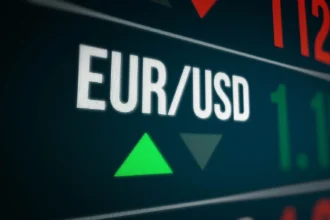Ethereum, the world’s second-largest cryptocurrency network, is gearing up for a game-changing upgrade. Dubbed Pectra, this upgrade is expected to go live on April 30, 2025, pending final confirmation. Developers have successfully deployed Pectra on the Hoodi testnet, and if all goes as planned, Ethereum will see improved scalability, efficiency, and user experience.
This article dives deep into what the Pectra upgrade entails, its key features, how it impacts staking and transactions, and whether the launch date is set in stone.
What Is the Ethereum Pectra Upgrade?
The Pectra upgrade is a combination of two major Ethereum network improvements:
- Prague (enhancements to the execution layer)
- Electra (upgrades to the consensus layer)
Together, these changes aim to enhance staking flexibility, lower transaction costs, improve user experience, and introduce smart contract functionality for wallets.
Key Features of Pectra
Pectra consists of 11 Ethereum Improvement Proposals (EIPs). Below are the standout changes coming with this upgrade:
1. Smart Contract Functionality for Wallets
One of the biggest improvements is allowing externally owned accounts (EOAs)—wallets controlled by users rather than smart contracts—to function like smart contracts. This means:
- Users can batch transactions for efficiency.
- Wallets can sponsor gas fees, enabling other users to transact without directly holding ETH.
2. Enhanced Staking Mechanism
- Validators can stake up to 2,048 ETH, a significant increase from the previous 32 ETH limit.
- This change benefits institutional validators while allowing smaller stakers to earn compounded staking rewards.
3. Ethereum Virtual Machine (EVM) Object Format (EOF)
- Enhances Ethereum’s execution model, improving smart contract efficiency.
- Supports better Layer-1 and Layer-2 functionalities for developers.
4. Transaction Fee Sponsorship & Account Abstraction
- Users will soon be able to pay gas fees in tokens other than ETH.
- Sponsored transactions allow third parties to cover transaction fees, making the Ethereum network more user-friendly.
5. Peer Data Availability Sampling (PeerDAS)
- Reduces costs for Layer-2 networks.
- Allows validators to verify large datasets without downloading everything.
Market Implications of Pectra
How Will Pectra Affect Ethereum Users?
The Pectra upgrade is set to bring a range of improvements that will make Ethereum more attractive to both retail and institutional users.
- Lower Fees: The ability to pay gas fees in alternative cryptocurrencies can reduce reliance on ETH and promote ecosystem growth.
- Improved UX: Smart contract-like wallets and sponsored transactions make Ethereum more beginner-friendly.
- More Staking Options: The increased staking limit could lead to more institutional adoption, enhancing network security.
Will Pectra Impact ETH Price?
Historically, Ethereum upgrades have had a bullish effect on ETH’s price due to improved functionality and demand. However, market conditions and macroeconomic factors will also play a role.
Is the April 30 Launch Date Certain?
While the Ethereum Foundation has scheduled Pectra for April 30, developers will continue monitoring the Hoodi testnet for any issues.
Past testnets like Holesky and Sepolia experienced technical difficulties, leading to additional debugging phases. If new issues arise, the upgrade may be delayed until May or June.
Frequently Asked Questions (FAQs)
1. What is the Pectra upgrade?
The Pectra upgrade is an Ethereum network update that enhances staking, transaction efficiency, and smart contract wallet functionality.
2. When will Ethereum’s Pectra upgrade go live?
It is scheduled for April 30, 2025, but could be postponed if issues arise during testing.
3. How does Pectra impact Ethereum staking?
Validators will be able to stake up to 2,048 ETH, significantly increasing staking flexibility and earning potential.
4. Will gas fees be lower after Pectra?
Users will be able to pay transaction fees in tokens other than ETH, making transactions more flexible and cost-effective.
5. How does the upgrade benefit developers?
Developers will gain enhanced smart contract functionality, improved execution models, and better Layer-2 support.
6. Will Pectra affect ETH’s price?
While upgrades historically boost Ethereum’s value, broader market conditions will ultimately influence price movements.
7. What is PeerDAS, and why does it matter?
PeerDAS reduces data verification costs for Layer-2 solutions, making Ethereum more scalable and affordable.
8. Can I still use my Ethereum wallet after Pectra?
Yes, all existing wallets will remain functional, but new features like transaction batching and gas fee sponsorship may require wallet updates.
9. Why was the upgrade tested on Hoodi?
Previous testnets Holesky and Sepolia encountered synchronization issues, leading to Hoodi being used as a fresh testing environment.
10. What happens if Pectra is delayed?
If major issues arise, developers may push the upgrade to May or June 2025 to ensure a smooth transition.
Conclusion
The Ethereum Pectra upgrade is set to transform the blockchain’s functionality by improving staking, smart contract capabilities, and transaction efficiency. If deployed as scheduled on April 30, it could mark another major milestone in Ethereum’s journey toward scalability and mass adoption.
For Ethereum users, developers, and investors, this upgrade presents new opportunities and challenges. Whether ETH’s price will react positively remains uncertain, but the long-term impact on the Ethereum ecosystem looks promising.
Disclaimer
This article is for informational purposes only and does not constitute financial or investment advice. Cryptocurrency investments are highly volatile, and users should conduct their own research before making any investment decisions.



